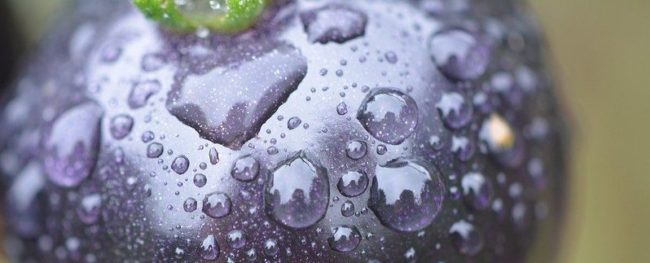Genetically modified organisms (GMOs) have earned a questionable reputation due to their initially strictly-commercial benefits, but what if I told you that a product with immediate health benefits is readily available, in the form of… a tomato.
This story started in 2008, when Cathie Martin and her team first published their paper in Nature Biotechnology, which discussed enhancing the nutritional value of tomatoes with anthocyanins[1]. Anthocyanins are essentially pigments which give, for example, blueberries, black grapes, plums, red onions, and raspberries their dark colours. Naturally, tomatoes have next to no anthocyanins (and it’s mostly in the leaves), so the researchers inserted two genes from the snapdragon plant to produce a unique genetically modified (GM) product — a purple tomato.
So why do that? Well, it’s not just for aesthetics. Apart from the lovely colour, anthocyanins have been found to have amazing health-promoting properties such as antioxidant and anti-inflammatory effects, therefore reducing the risk of cardiovascular disorders, diabetes, obesity, and cancer[2]. Martin’s experiment showed that cancer-prone mice who were given the purple tomatoes lived on average 30% longer than mice fed the same portions of ordinary tomatoes. Moreover, the taste is seemingly unaffected.
Martin’s philosophy is quite simple: in her Norwich laboratory, she is trying to get people to eat healthier and to receive all the necessary nutrients. Tomato, being one of the most consumed vegetables around the world, seemed a perfect candidate to launch her project. Her spin-off company, Norfolk Plant Sciences, is now advertising fresh tomatoes, juice, and even seeds to grow your own[3].
However, the UK is not quite ready for the GMO takeover: although due to Brexit the UK doesn’t have to comply with the European Union’s strict no-GMO policy, the scientists are still waiting for approval, as the long-term effects of such interventions remain unknown. The story is somewhat different across the pond, however, where, on 22nd September 2022 the United States Department of Agriculture gave the green light to the purple tomato, and sales in the country are due to begin this year[4].
Overall, given their efficient production, enhanced nutrition, and extended shelf-life, GM products like the purple tomato might be our last resort if we continue to see the shortages of resources we are currently experiencing.
[1] https://www.nature.com/articles/nbt.1506
[2] https://theconversation.com/the-story-of-the-purple-tomato-and-why-its-success-is-a-win-for-gm-foods
[3] https://www.bigpurpletomato.com/products
[4] https://www.thetimes.co.uk/article/purple-tomatoes-herald-a-new-era-for-gm-food-9xwvfl3pw
Edited by Hazel Imrie
Copy-edited by Molly Donald and Rachel Shannon

